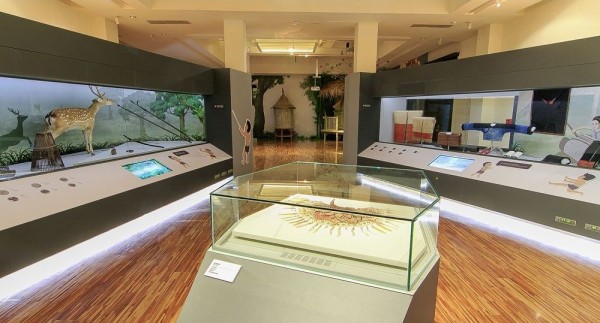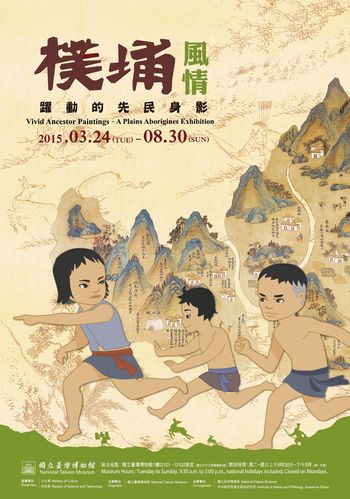Address: No. 2 Xiangyang Road, Zhongzheng District, Taipei City
A special exhibition on Taiwan's Plain Aborigines (平埔族) will be held at the National Taiwan Museum (國立臺灣博物館) through Aug. 30, combining paintings of indigenous customs with historic records, and using digital technology to project a 17-meter-long animation of the "Kangxi Taiwan Map,” the museum's most-coveted artifact.
"Vivid Ancestor Paintings - A Plains Aborigines Exhibition” is jointly organized by the National Taiwan Museum, the National Palace Museum (國立故宮博物院), and the Institute of History and Philosophy under Academia Sinica (中央研究院歷史語言研究所). The organizers hope to re-present the lifestyle of Plains Aborigines in pre-colonized Taiwan through artifacts across time and space, imagery, and digital multimedia displays.
Visitors can enter the fields of Plains Aborigines during the early Qing Dynasty through the 17-meter-long animated display, which will be shown alongside four precious historic maps of the island — "Kangxi Taiwan Map” from the National Taiwan Museum collection, "Yongzheng Taiwan Map” and "Qianlong Taiwan Map” from the National Palace Museum collection, and "Map of Taiwan Aborigines in the mid-Qianlong Qing Dynasty” from the Academia Sinica Institute of History and Philosophy collection.
The site changes of Plains aboriginal villages depicted in the four maps clearly show the changes in spatial distribution of settlements during the first 100 years of the early Qing Dynasty. In an era lacking audiovisual recordings, these hand-painted maps full of vivid and annotated illustrations are important items in understanding ancestral living conditions.
"Kangxi Taiwan Map,” the earliest known painted scroll of the island, is widely acknowledged as the single most ancient map of Taiwan. The map depicts the geographical and cultural landscape of western Taiwan from south to north in the early Qing Dynasty and recorded some 120 Plains aboriginal settlements.
In addition to aboriginal settlement names and their geographical distribution, there are also detailed recordings of house patterns, economic activities, mode of transport, and the natural environment; therefore, the map can be succinctly called a microfilm of the social and cultural life in Taiwan during that era.
The highlight of the exhibition, the full-sized "Kangxi Taiwan Map” animation, stems from a Ministry of Culture program urging the use of technology to revitalize and stimulate cultural output and consumption. It is also one of the digital cultural-and-creative items subsidized by the Executive Yuan's Scientific and Technological Development Fund.
- Kangxi Taiwan Map / 康熙臺灣輿圖
- Yongzheng Taiwan Map / 雍正臺灣輿圖
- Qianlong Taiwan Map / 乾隆臺灣輿圖
- Map of Taiwan Aborigines in the mid-Qianlong Qing Dynasty /清乾隆中葉臺灣番界圖

